
How to Take Meeting Notes That Actually Help You Get Things Done
Imagine you’re in a critical design meeting. The product manager and tech lead are discussing the specifications for a new feature, the team is brainstorming implementation details, and you’re furiously trying to absorb it all. Some days later, you’re revisiting the project and realize you don’t understand your notes on the outcomes nor key decisions and actions. What happened? It’s likely your note-taking method didn’t work as effectively as it could have.
Taking good notes is not only a skill, it’s an art. As engineers, we must take part in several meetings, learn new concepts and report our tasks, accomplishments and contributions. In all these scenarios, if we take good notes, we can ensure clarity, reduce cognitive load, boost our productivity and become better problem-solvers.
While reading the book Limitless by Jim Kwik, in the "Study" chapter, he mentions the topic of note-taking which led me to research it further. Turns out, there was more to it than I had previously imagined.
In this article, I'll collect my key findings and we’ll explore the importance of note-taking for engineers, introduce four popular methods, and help you determine which approach fits your needs.
Contents
How Meeting Notes Help You Get Things Done
Our projects and products often involve complex systems, decision-making, record-keeping and collaborative input from diverse stakeholders and colleagues. Therefore, notes serve as a bridge between discussion, research and actionable work. They enable you to:
- Capture important details and prevent critical information from being lost or forgotten
- Clarify your thoughts and help you refine and structure your thinking
- Support your learning and improve the retention of information
- Communicate effectively with teammates, managers and stakeholders
- Stay organised, keeping track of information, tasks, decisions, and follow-ups
Important Tips on Note-Taking
Before deep-diving into the methods, there are general strategies you can apply. Keep them in mind: no matter the approach you choose:
- Before even starting, think about the purpose of taking the notes. What is your goal? This helps you identify the most important information that is relevant to you
- Listen to extract what you need and take notes in a way that will enhance your ability to recall the information later.
- Handwrite your notes. Studies show your retention is better when you write instead of typing. This is one of the hardest parts since digital documents are better for sharing and searching. Maybe you could use an app to convert your handwriting to text.
- I cannot stress this enough: Use your own words! Listen to the information being shared/discussed but avoid heavily concentrating on taking notes
- We can't write that fast so avoid writing every single word you hear
4 Methods to Take Meeting Notes Like a Pro
Below I describe four note-taking methods commonly used by professionals and students, and explore their advantages, disadvantages and best-use scenarios.
1. Cornell
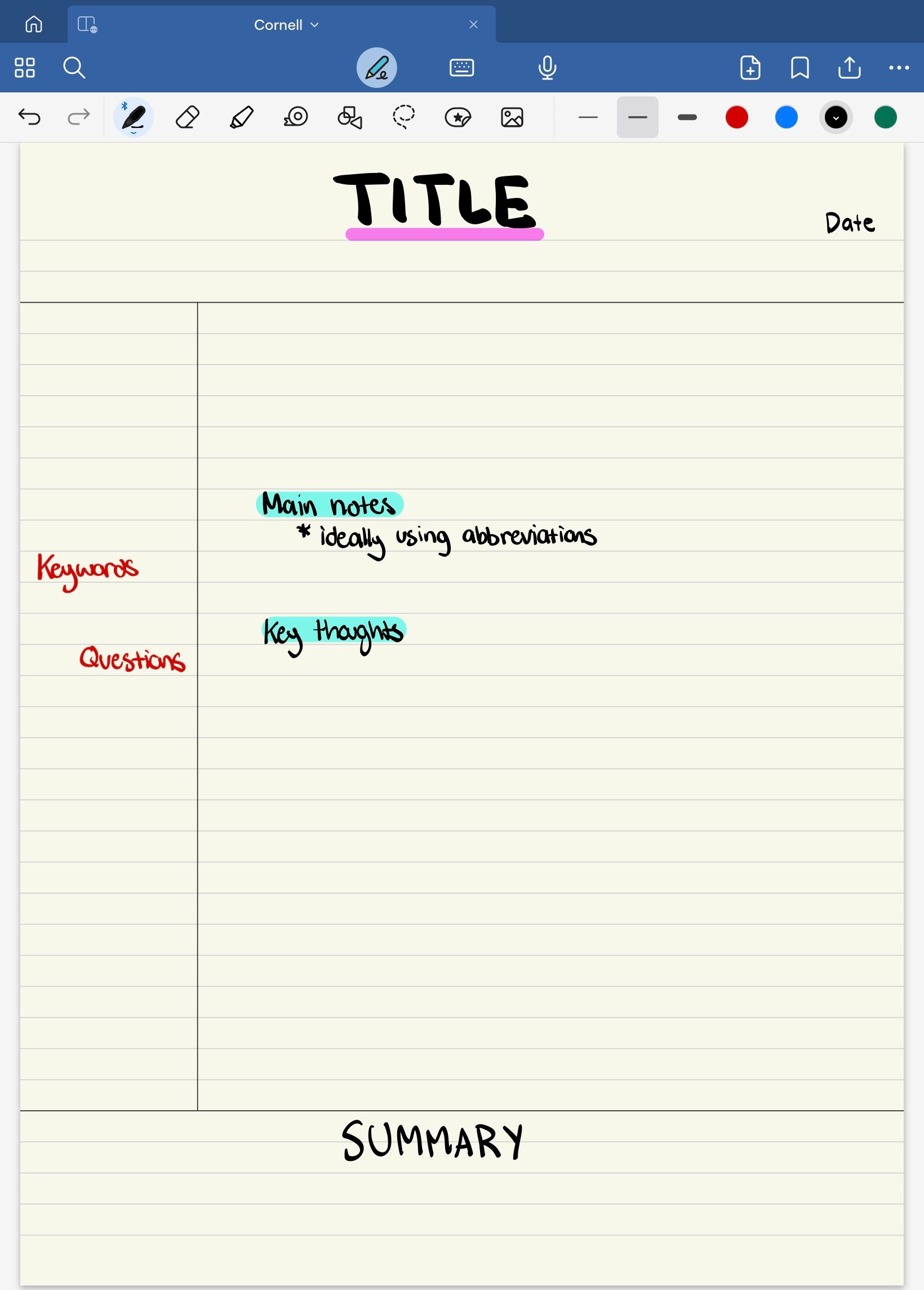
I wasn't aware of this method until I started looking into this topic. It was created in the 1950s by Walter Pauk from Cornell University. In this method, you divide your page into three sections: 1) a narrow left column for cues, questions or brainstorming, 2) a wide right column for notes, and 3) a bottom area for summaries.
Advantages: promotes structured, organised notes; encourages active review through summaries and cue-based recall; ideal for studying and revisiting complex topics.
Disadvantages: not visual; a little too rigid for brainstorming; requires discipline to maintain the format consistently; it could be time-consuming.
Best for: studying technical documentation or learning something new; summarising meetings with clear agendas and key points.
2. Outline
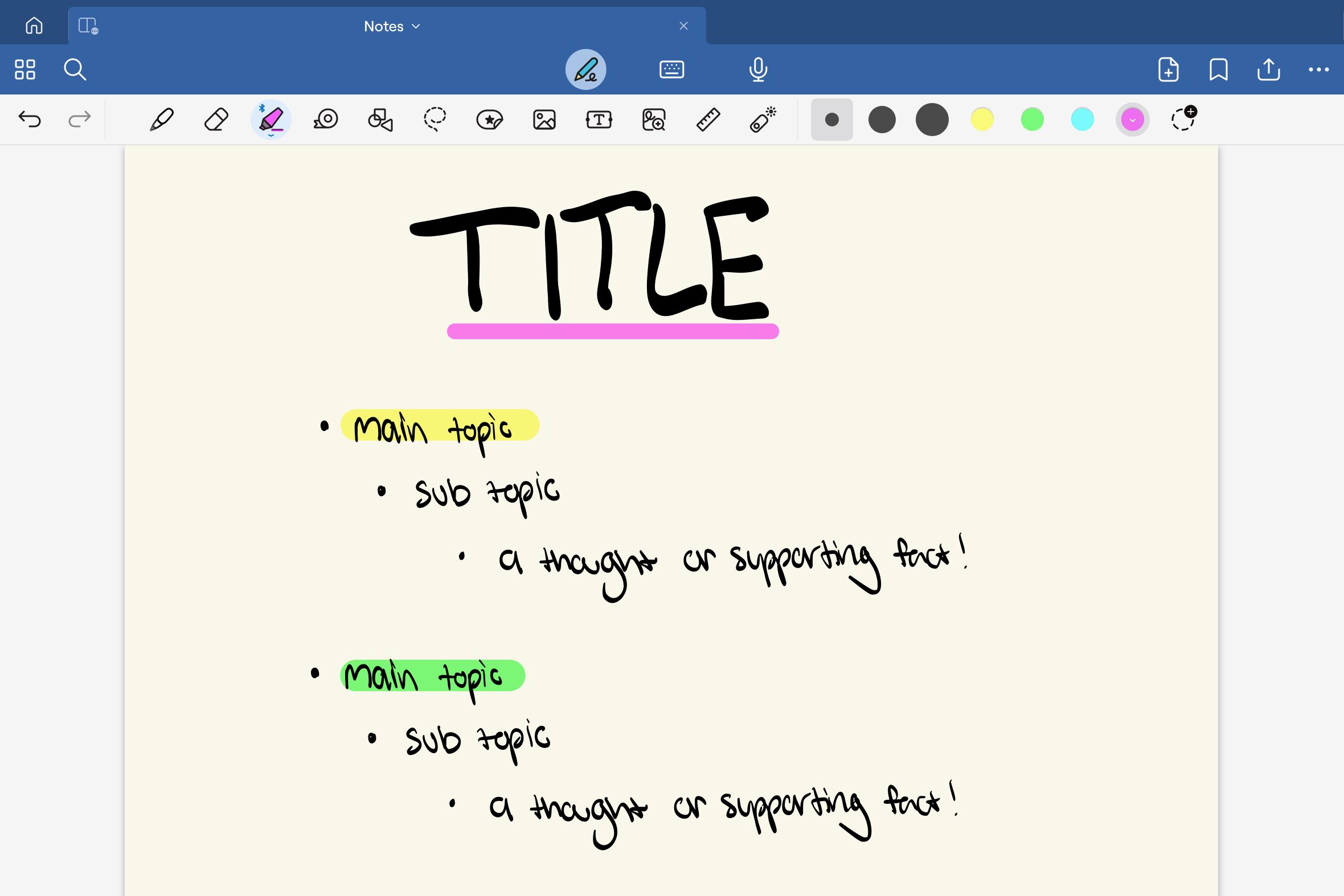
This is the most natural for me and the method I use organically for my notes. In this method, notes are organised hierarchically, using bullet points or numbers to break down topics and subtopics.
Advantages: very simple to use; great for capturing linear, logical discussions; records different information and their relationship; facilitates quick scanning and retrieval of information.
Disadvantages: Less effective for capturing non-linear discussions or creative brainstorming; may lead to passive note-taking; lacking critical engagement or thoughtful reflection on the material.
Best for: documenting step-by-step processes; recording lecture-style presentations or code walkthroughs.
3. Boxing
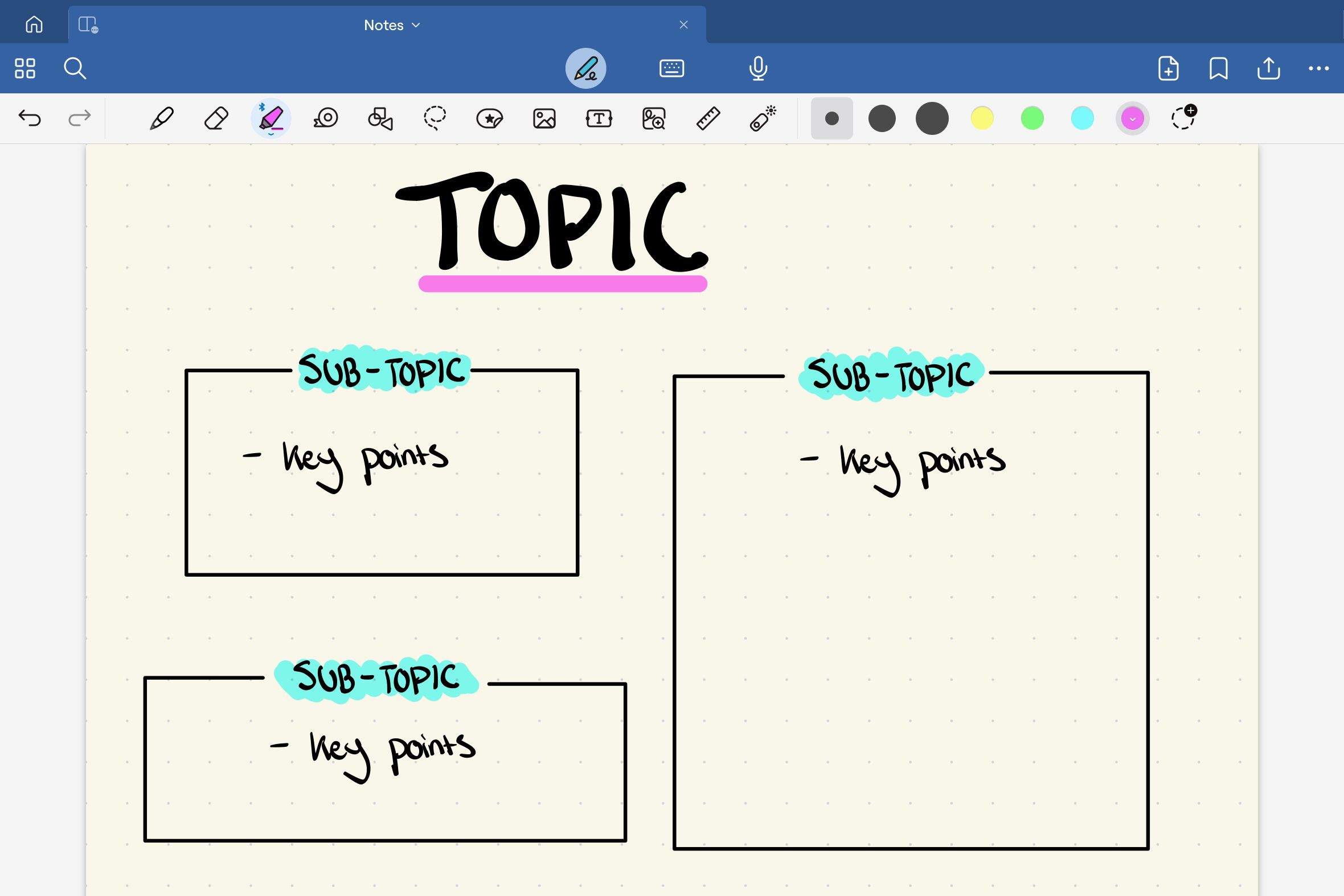
The Boxing method involves dividing your page into distinct sections or “boxes,” each dedicated to a specific topic. I personally use this for my 1:1 notes using my team with a template I prepared beforehand.
Advantages: visually intuitive, improving recall; easy to separate topics at a glance; keeps information compartmentalized and organized.
Disadvantages: requires space and may not work well with dense content; hard to adapt on the fly during fast-paced discussions; requires understanding the main topic and additional planning.
Best for: tracking multiple topics during a multi-threaded meeting; managing project notes that span diverse areas; excels in structured, hierarchical, or categorized content.
4. Mind-Mapping
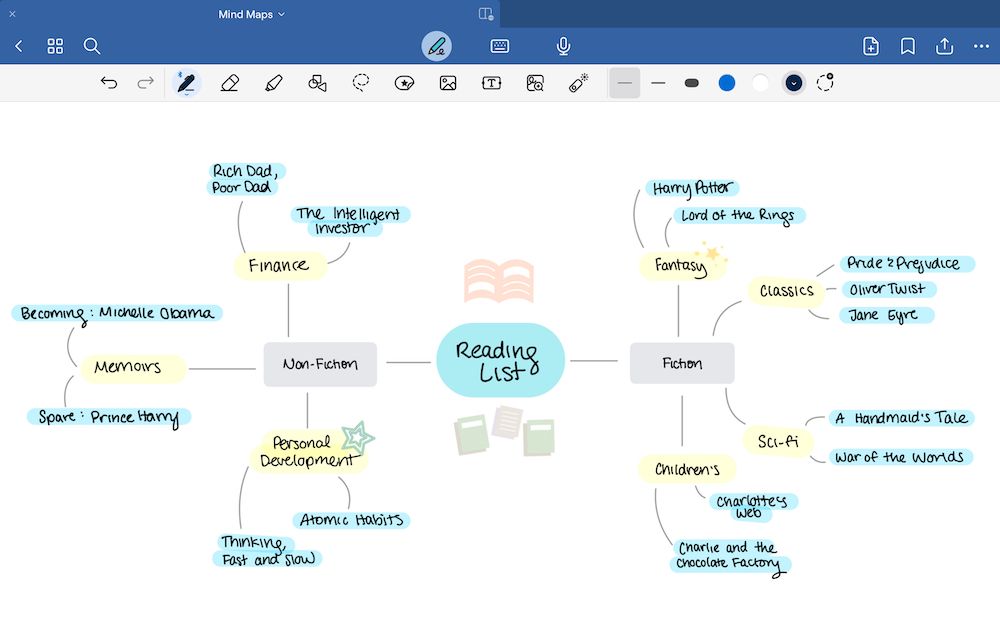
Mind Mapping is a creative, non-linear approach that visually connects ideas around a central theme using branches and nodes.
Advantages: excellent for brainstorming and generating ideas; encourages creative thinking and identifying connections between concepts.
Disadvantages: can become cluttered with complex topics; not suited for detailed or sequential information.
Best for: planning architecture designs or brainstorming feature ideas; capturing exploratory discussions or whiteboarding sessions.
The key to master “taking notes” is adaptability and flexibility. There is no one-size-fits-all approach. Consider the nature of the information, the time you need to prepare, your end goal, the setting and your personal style. Get familiar with the methods so you can use them all!
Take Notes, Take Control
Effective note-taking is a must-have skill for engineering excellence. It empowers you to navigate complexity, retain critical information and collaborate well with others. However, like every other skill, it takes practice to master.
Ready to enhance your note-taking game?
Start experimenting with these methods in your next meeting or learning session. You might be surprised how a small change can lead to big improvements in productivity and clarity.
And remember: the best notes are the ones you can use. Revisit them, refine them, and make them a part of your workflow.
Related articles
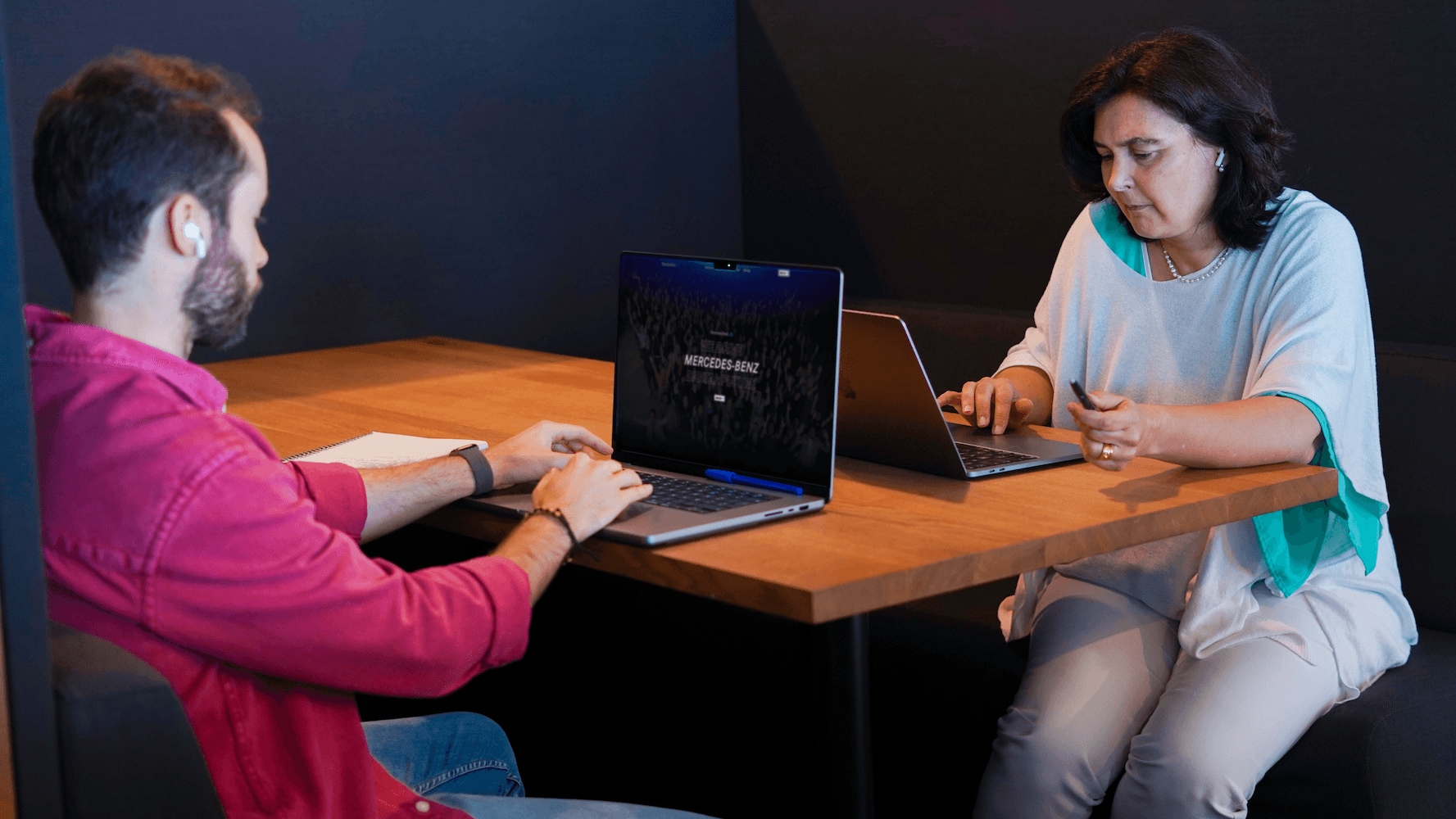
Filipa Anjos
Behind the Scenes of PI Planning: Insights from an RTE
As a Release Train Engineer (RTE), facilitating a successful PI Planning event takes more than just showing up on the day. It’s a continuous cycle of preparation, coordination, and follow-through that enables teams to align, plan, and execute effectively. Here’s a look into how I approach this key event — and a few tips I’ve picked up along the way.
May 7, 2025

Eduarda Cruz, Inês Marques, Joanna Tokarz-Haerting, Susanne Kopp
More Than a Day: Inspiring the Next Generation of Women in Tech
Every year in Germany, and increasingly across Europe, Girls’ Day opens doors. Tangible ones, into classrooms, offices, or workshops. But more powerfully, into possibility — where girls can see themselves building what's next.
Apr 30, 2025

Pedro Reis, Simon Truckenmüller
Accessibility Isn’t a Barrier. It’s a Bridge.
At Mercedes-Benz.io, we often talk about building meaningful experiences. We pride ourselves on designing user journeys that feel intuitive, purposeful, and, most of all, human. But for those experiences to truly matter, they need to be\naccessible. To everyone.
Apr 22, 2025